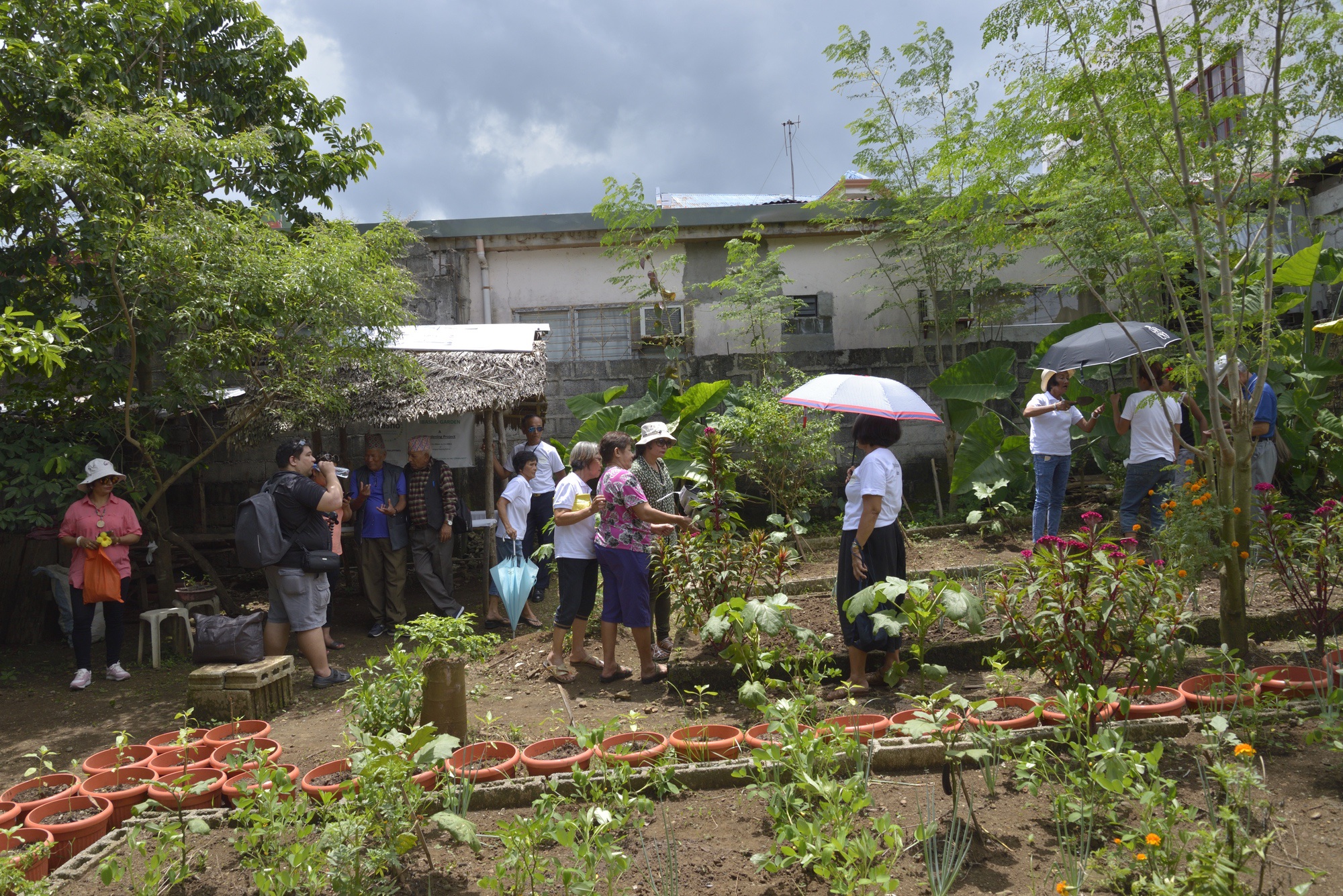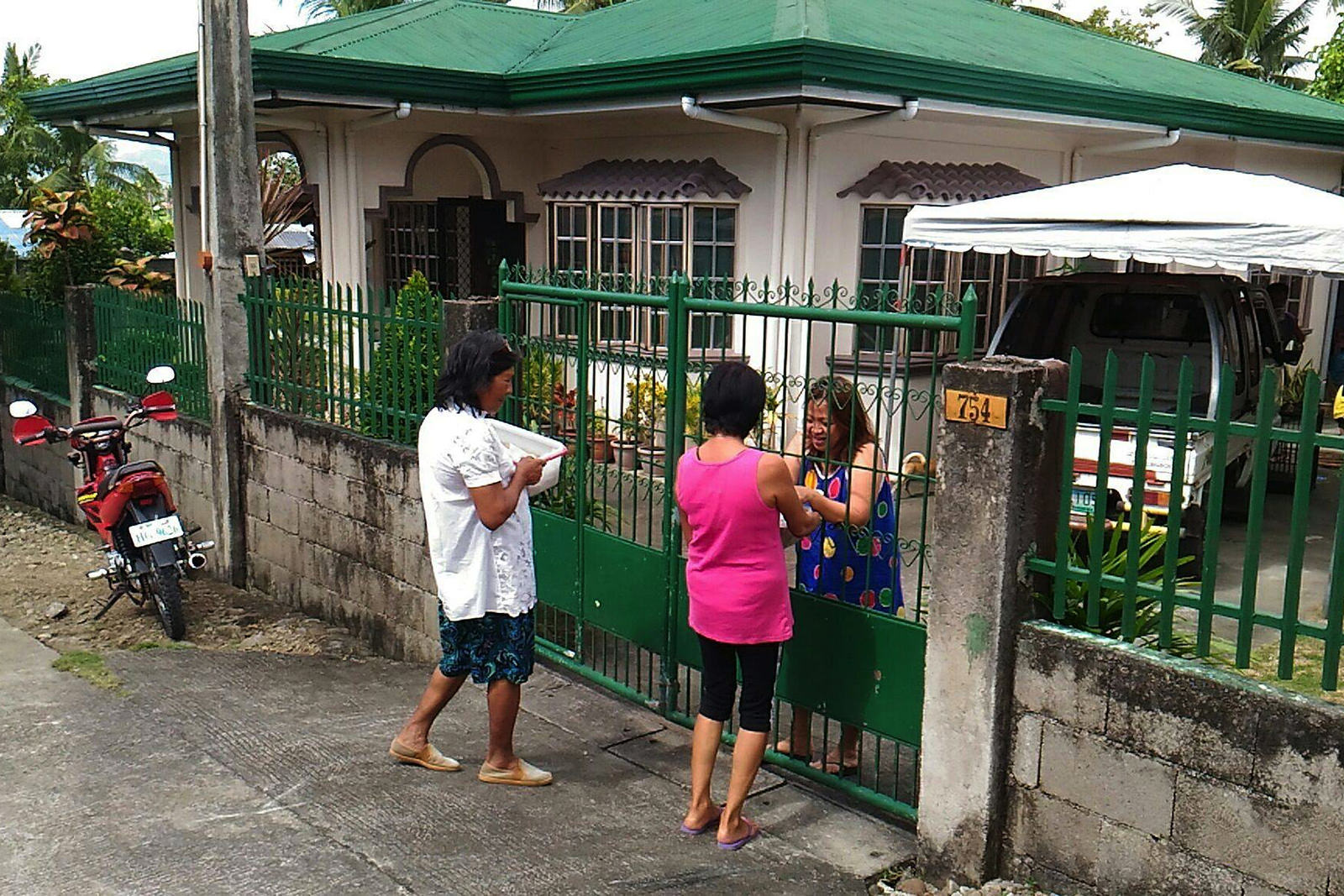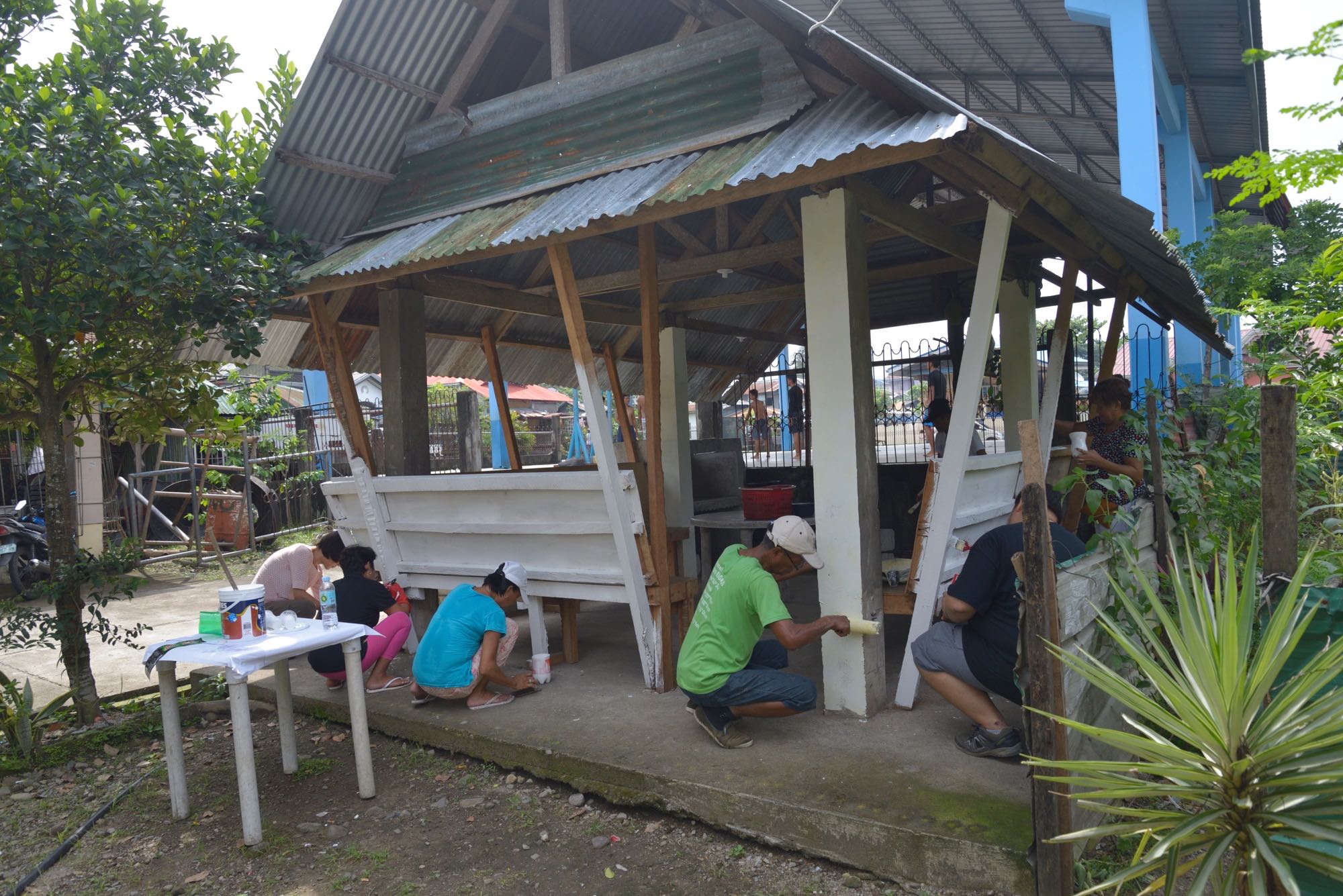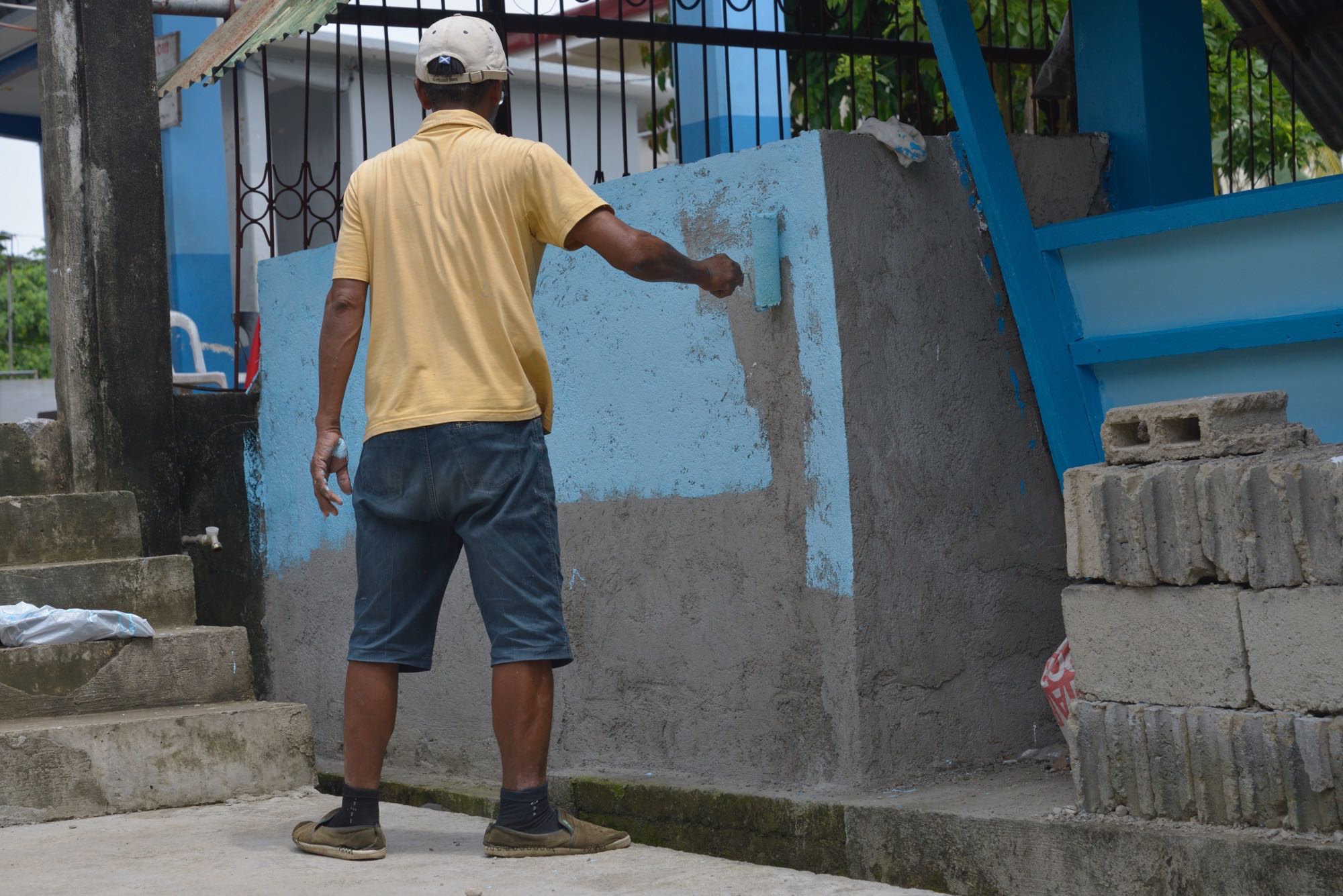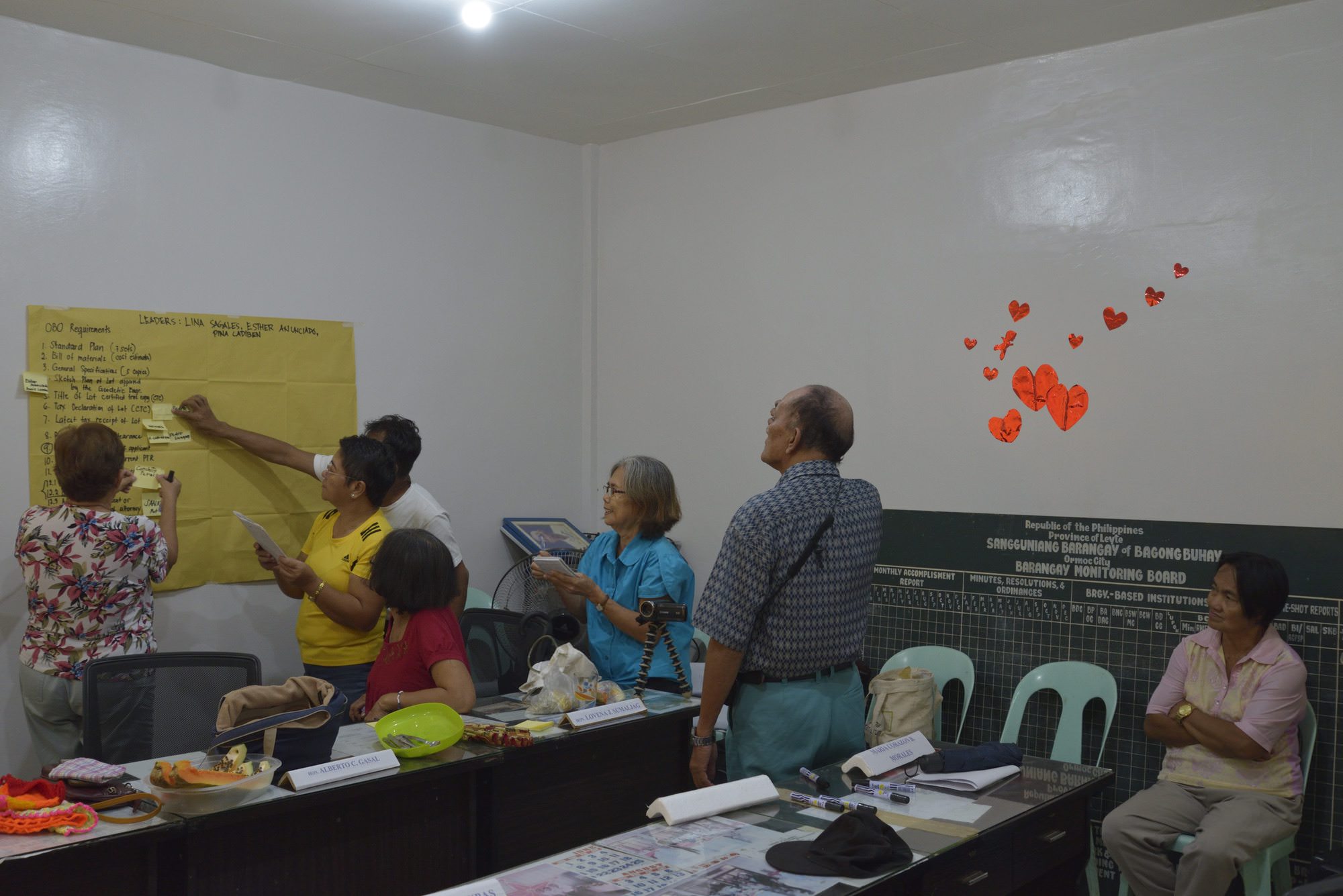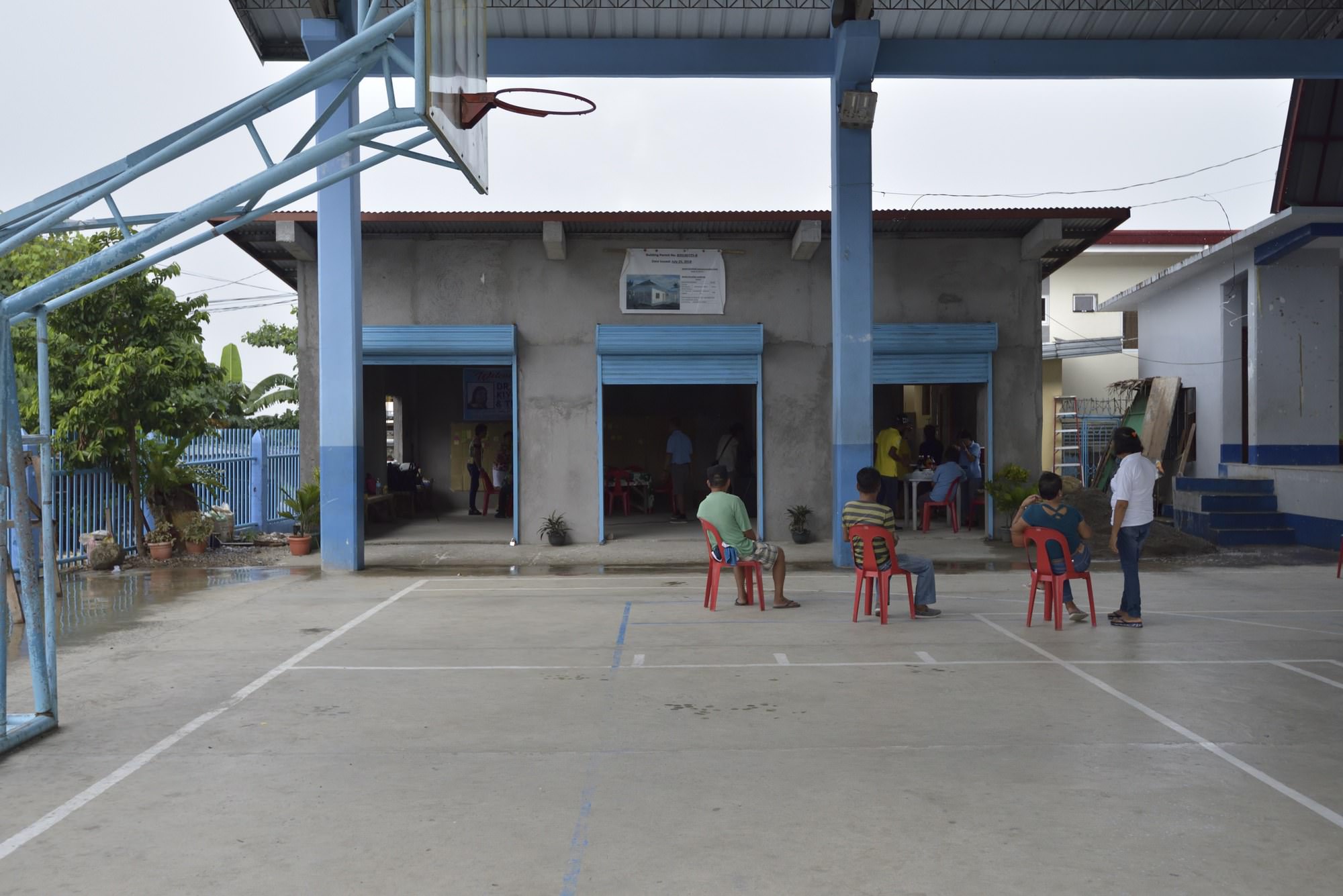Contents
Ibasho in the Philippines
“I was feeling depressed when Ibasho team came and introduced their concept. I was inspired and happy that I still can do something to help others. I felt relieved that I don’t have to feel helpless as I age.”-
– Elderly woman in Ormoc, Philippines, after the Typhoon Yolanda
Ibasho founder Emi Kiyota was involved in a report on the Great East Japan Earthquake published by the HelpAge in 2013. Through this connection, the Ibasho technical team was invited by HelpAge International to explore the possibility of developing the Ibasho project after the super typhoon Yolanda. HelpAge was already working on the disaster relief projects in partnership with COSE (Coalition of Services and the Elderly)*1).
In April 2014, five months after typhoon Yolanda hit the Philippines, the Ibasho development team and HelpAge-COSE team members visited five communities affected by the typhoon, including Barangay Bagong Buhay. They helped assess the communities’ needs and exchanged ideas with local elders about how Ibasho could help elders lead their recovery process, thereby benefitting younger members of the community as well.
The Ibasho technical team chose Barangay Bagong Buhay as the site for an Ibasho project in October 2014 and organized a launch workshop with a group of local elders in January 2015. Since then, elders in Barangay Bagong Buhay have been working to implement the Ibasho concept in their community. Their efforts are slowly changing perceptions about the role of elders in the area.
Barangay Bagong Buhay is located in Ormoc city in the province of Leyte in the region of Eastern Visayas of the Philippines. Barangay, which is the native Filipino term for a village, is the smallest administrative division in the Philippines. The total population of this barangay was 5,935 in 2015. According to a survey conducted by Ibasho in 2019, 68.8% of the respondents reported that their houses were partially damaged and 19.3% that their houses became inhabitable*2) due to typhoon Yolanda.
*1) HelpAge international helps older people claim their rights, challenge discrimination and overcome poverty, so that they can lead dignified, secure and healthy lives. It was founded in 1983 in UK and works with more than 120 partner organizations in more than 75 countries. Coalition of Services of the Elderly, Inc. (COSE) is a non-government organization working with and for older persons, especially the most disadvantaged ones, in urban and rural areas in the Philippines to address issues of poverty, exclusion, and invisibility so they may live in dignity. COSE joined the HelpAge International network in 1991, establishing the HelpAge-COSE partnership to respond to the disaster relief and recovery effort (Clerk, 2014).
*2) As part of Ibasho’s replication project, Ibasho conducted an impact evaluation of the elders 60 years or older in Barangay Bagong Buhay. This data is based on the 3rd data collection, which was conducted between January 5 and 23, 2019, and reached approximately 70% of all the elders.
- Articles about Ibasho Philippines
- Ibasho Philippine Facebook page
- Ibasho Philippines Chronological Table
- Progress report of the Ibasho project (2015)
Ibasho Philippines’ origin
April 2014: HelpAge-COSE coordinates first meeting with each of five communities and Ibasho development team chooses Barangay Bagong Buhay as the collaboration site
October 2014: Ibasho team conducts education and vision workshops
January 2015: Ibasho team conducts operation/program workshop. The elders decide on the first three Ibasho activities: plastics recycling, a nutrition program for children, and vegetable farming
February 2015: Ibasho Philippines project started under the local coordinator’s guidance.
Ibasho livelihood projects
Elders in Barangay Bagong Buhay raised their own funds to build the Ibasho building. They then agreed on the following income-generating activities to keep it going:
- Collect plastic bottles and sell them to recycling center
- Operate a mobile Ibasho cafe
- Make and sell crocheted items
- Make and sell soap
- Grow and sell sunflowers
- Operate a vegetable farm*3) and sell the vegetables
To learn how to maintain a sustainable operation, Ibasho technical team and the local coordinator arranged for the team of elders to make a site visit and learn from a local NGO, Naungan San Juan Mangroves Planters Association, that plants mangroves and organizes ecotourism.
*3) Elders negotiated with a landowner to rent an unused backyard free of charge. They then coordinated with community members to clean up the property, install the water system, and build a garden shed to be used for growing seedlings. Elders also space for school children to grow vegetables and cooked some of the vegetable to provide healthy meals for children. A Japanese elder visited the vegetable garden and shared ideas with the Filipino elders on how to improve it, based on experiences gained in Ibasho House in Japan.
Community improvement projects
With permission from the barangay leadership, Ibasho Philippines members renovated the community dining hall (a community space where children come to eat) as an elder-led community improvement, to house Ibasho events until the Ibasho building was completed. They added benches and a kitchen, then painted the entire building.
Creating an Ibasho hub
Throughout the community capacity building process, elders voiced their need for a place they could claim as their own. Initially, however, all Ibasho activities had to be organized in existing community spaces or in one of the elders’ homes, since they did not have a dedicated space. As a part of the pilot project, elders organized a mobile cafe and tried to sell homemade snacks.
After 12 months, Ibasho Philippines negotiated with the barangay leadership to secure the space next to a basketball court for Ibasho. Elders signed a memorandum of understanding with the barangay, coordinated all neccessary permits and paperwork to create the Ibasho hub, and found a local engineer to help to design the space and managing the construction process. The groundbreaking ceremony was held in June 2018.
Ibasho Philippines elders negotiated with the City of Ormoc to obtain the help for the construction of the building and its labor cost, and secured the help of a group of army reserves—Philippines Army Reserve Group 802—for construction. During construction, elders fed and housed the soldiers, whose salaries were paid by the Army. In January 2019, the elders held an opening ceremony.
Location
2015 Census Figures for the Philippines
| Philippines | Ormoc City | Barangay Bagong Buhay | |
|---|---|---|---|
| Population | 100,979,303 | 215,031 | 5,935 |
| Percentage of older population (65yeas and above) | 4.7% | 4.6% | 3.9% |
| Households | 22,975,630 | 50,341 | N/A |
- Barangay Bagong Buhay consists of 7 poroks
- Bagong Buhay means “new life”(Bagong means “new”; buhay means “life”)


